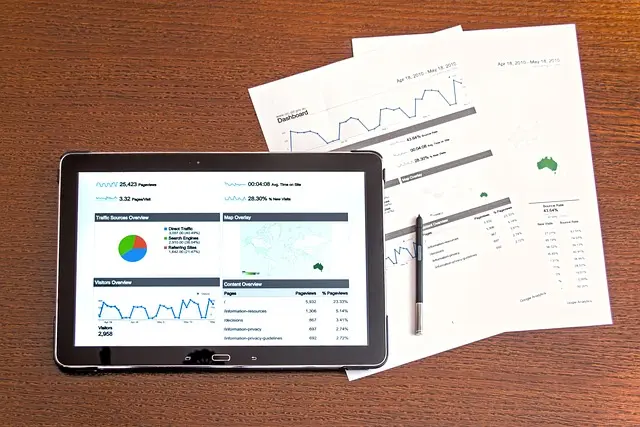Introduction
 Facility management is a crucial component in maintaining seamless operations within any organization. Unfortunately, many facility and construction site managers often fall into common pitfalls, resulting in inefficiencies and elevated costs. Did you know that 31% of facilities management teams rely solely on in-person training, hindering their ability to scale efficiently and comprehensively cover all topics? This article aims to shed light on these common facility management mistakes and how to avoid them, ensuring optimal performance and cost savings. By understanding and implementing facility management best practices, you can significantly enhance your operations and steer clear of the high costs associated with facility management errors.
Facility management is a crucial component in maintaining seamless operations within any organization. Unfortunately, many facility and construction site managers often fall into common pitfalls, resulting in inefficiencies and elevated costs. Did you know that 31% of facilities management teams rely solely on in-person training, hindering their ability to scale efficiently and comprehensively cover all topics? This article aims to shed light on these common facility management mistakes and how to avoid them, ensuring optimal performance and cost savings. By understanding and implementing facility management best practices, you can significantly enhance your operations and steer clear of the high costs associated with facility management errors.
Manual Data Collection
 One of the most prevalent mistakes in facility management is relying on manual data collection. This method is not only time-consuming but also prone to errors, which can significantly hinder scalability and efficiency. For instance, using paper forms can double the time and effort due to the need for double entry to view on a computer or smart device. To overcome this, investing in facility management software can centralize and streamline data collection and analysis, leading to more accurate and efficient operations. In fact, 24% of facility management teams can’t track their training at all today, and another 21% rely on manual tracking. By adopting automated solutions, facility managers can avoid these common pitfalls and enhance their operational efficiency. For more insights on improving your facility management practices, check out our article on the importance of planned preventative maintenance here.
One of the most prevalent mistakes in facility management is relying on manual data collection. This method is not only time-consuming but also prone to errors, which can significantly hinder scalability and efficiency. For instance, using paper forms can double the time and effort due to the need for double entry to view on a computer or smart device. To overcome this, investing in facility management software can centralize and streamline data collection and analysis, leading to more accurate and efficient operations. In fact, 24% of facility management teams can’t track their training at all today, and another 21% rely on manual tracking. By adopting automated solutions, facility managers can avoid these common pitfalls and enhance their operational efficiency. For more insights on improving your facility management practices, check out our article on the importance of planned preventative maintenance here.
Insufficient Resource Allocation
 ### Insufficient Resource Allocation
### Insufficient Resource Allocation
Another significant issue in facility management best practices is insufficient resource allocation. When organizations fail to allocate adequate budgets, personnel, and technology, they often resort to reactive management, leading to increased costs and operational inefficiencies. For example, Louis Vuitton saw a 96% reduction in the time spent on repair and maintenance issues after adopting a sophisticated software platform. This underscores the importance of investing in the right resources to ensure proactive operations. By prioritizing sufficient investment in facility management tips, businesses can enhance efficiency and avoid the high cost of facility management errors. To learn more about improving your facility management practices, visit Circle UK Group website.
Reactive Management
 ### Reactive Management
### Reactive Management
Reactive management is a common pitfall in facility management that can lead to high costs and operational disruptions. Instead of waiting for equipment to fail, implementing Planned Preventive Maintenance (PPM) can significantly reduce unexpected emergencies and prolong the lifespan of your assets. Organizations adopting a preventive maintenance plan have saved between 12%-18% on their annual maintenance expenses. This proactive approach not only cuts down on the high costs associated with facility management errors but also enhances overall efficiency. By focusing on facility management best practices such as regular inspections and timely repairs, facilities managers can avoid the costly cycle of reactive maintenance. A notable example is Louis Vuitton, which negotiated lower prices on 25% of proposals after implementing preventive maintenance practices. For more insights on improving your facility management practices, check out our article on cutting construction costs with innovative site security solutions.
Conclusion
 ### Conclusion
### Conclusion
In conclusion, avoiding common facility management mistakes such as manual data collection, insufficient resource allocation, and reactive management can lead to significant improvements in efficiency and cost savings. By adopting facility management best practices and leveraging technology, facility managers and construction site managers can ensure smoother operations and better performance. For instance, Louis Vuitton saw a 96% reduction in the time spent on repair and maintenance issues after adopting a sophisticated software platform. This highlights the importance of investing in the right tools and strategies to avoid the high costs associated with facility management errors. By focusing on proactive measures and continuous improvement, facilities managers can create a more efficient and cost-effective environment.




